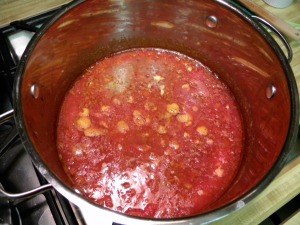The charming town of Petaluma is surrounded by the history of Italian ancestors – farmers and ranchers who raised the food that fueled the growth of San Francisco and the North Bay in the late 1900s. Third and fourth generation growers and ranchers continue this tradition today, and many have been able to sustain their heritage through the community actions of MALT and the Sonoma Land Trust. This recipe makes me think of their history, and it is a favorite dish. It’s simple, and yummy. My two requisites.
Polenta
Ingredients:
6 cups water
2 teaspoons salt
2 cups polenta
2 tablespoons butter (optional)
Shredded Parmesan cheese (optional)
Add salt to water in medium pot and bring to a low boil. Slowly stir in polenta, turn heat down to a simmer. Simmer for about 20 to 25 minutes, stirring frequently. The polenta should bubble gently – you don’t want the bottom to burn. You can’t over stir this recipe, so relax, listen to some music and in the meantime brown the sausages.
After the polenta has finished cooking through, stir in the butter (optional, but very good). Top with shredded Parmesan when you serve this creamy dish – I often serve it with goat cheese crumbled or Chèvre spread on top. You can also serve the polenta with tomato-basil-garlic sauce, or your favorite pasta sauce. I like to serve Polenta with Italian sausage. (See recipes below.)
You have a choice of how to serve the polenta: Creamy or browned. I usually serve it creamy and then place what is left over in a bowl or storage container and place it in the ‘fridge. I take it out later, cut it when it’s cold, and brown it in olive oil as a delicious “left-over.”
Italian Sausage
Buy your favorite Italian sausage – Mild or Hot. These are uncooked sausages, therefore you need to properly heat them through as you cook them and brown them. To serve 4, place 4 sausages in a deep sauté pan with a lid with ¼ to ½ cup of water. Poke each sausage, 2 to 3 times, with a knife. At medium-high heat, bring the sausages and water to a good simmer, then lower to low-medium heat and cover for 10 minutes. Add water if needed as the sausages cook through. Take the lid off and brown both sides on medium heat.
Tomato-Garlic-Basil Sauce
This quick sauce goes with almost anything!
Ingredients:
1 small can stewed tomatoes
1 large garlic clove, crushed and finely minced
½ tablespoon olive oil
1 teaspoon dried Basil
In a small saucepan, sauté the garlic in olive oil until just golden. Add stewed tomatoes with juice and crush tomatoes with a “potato masher” in the pan. Simmer 5 minutes. Add dried Basil and simmer 5 minutes. Voila . . . it’s ready.













